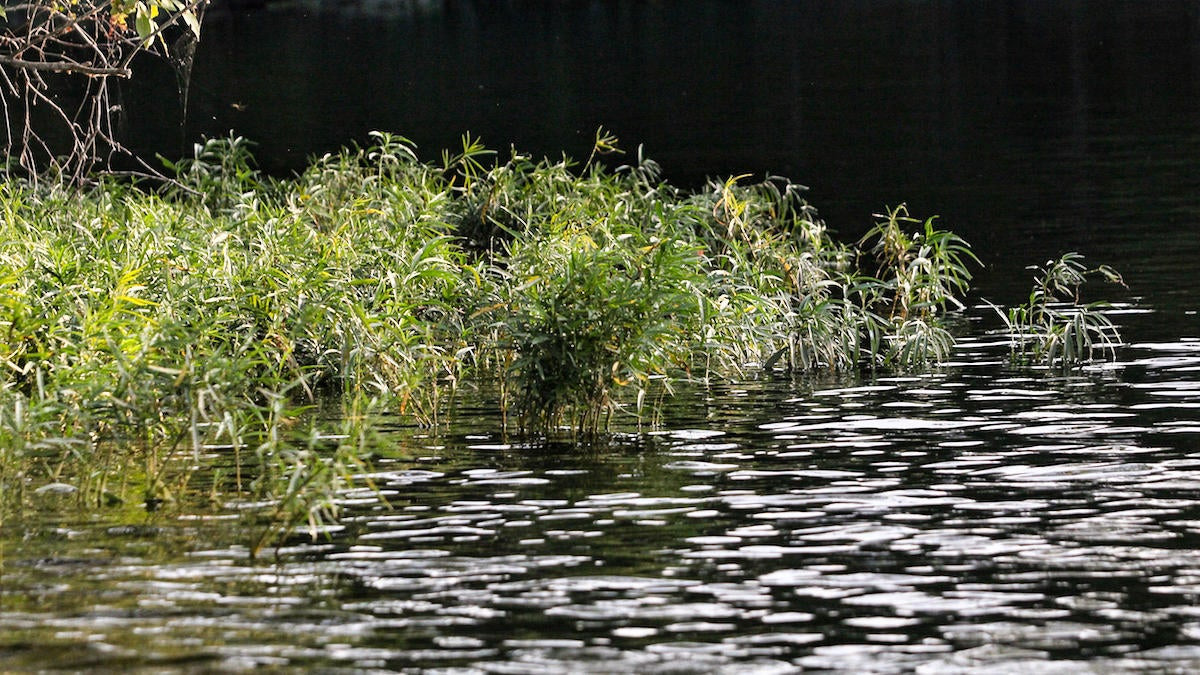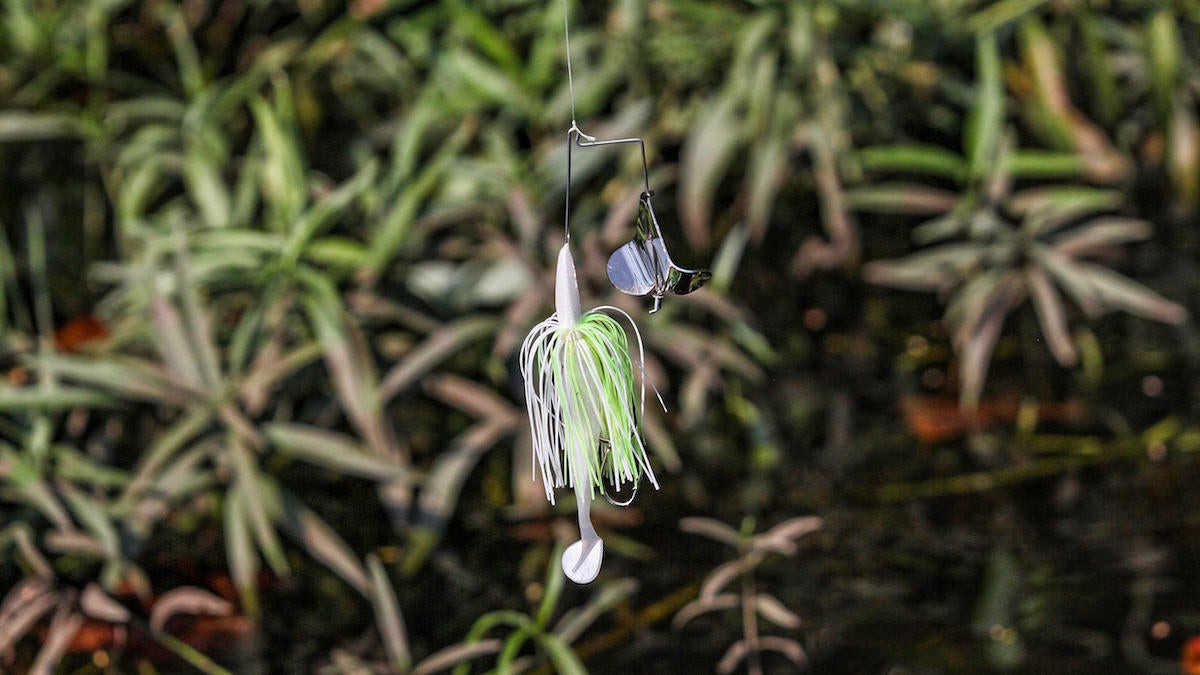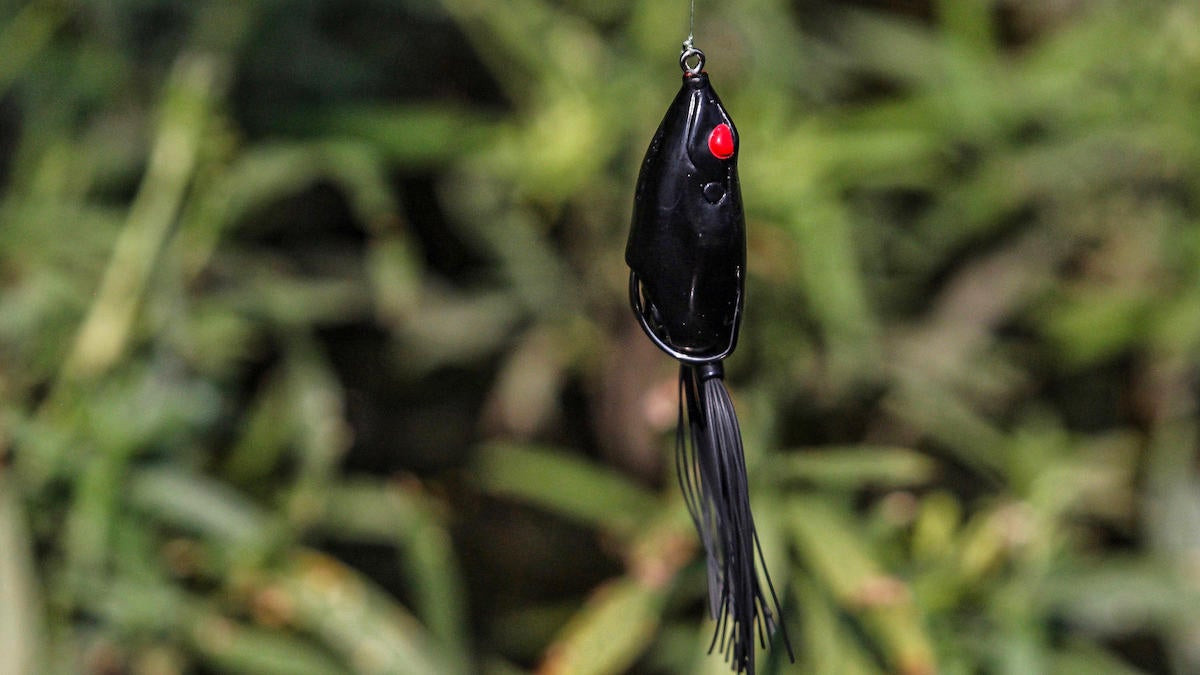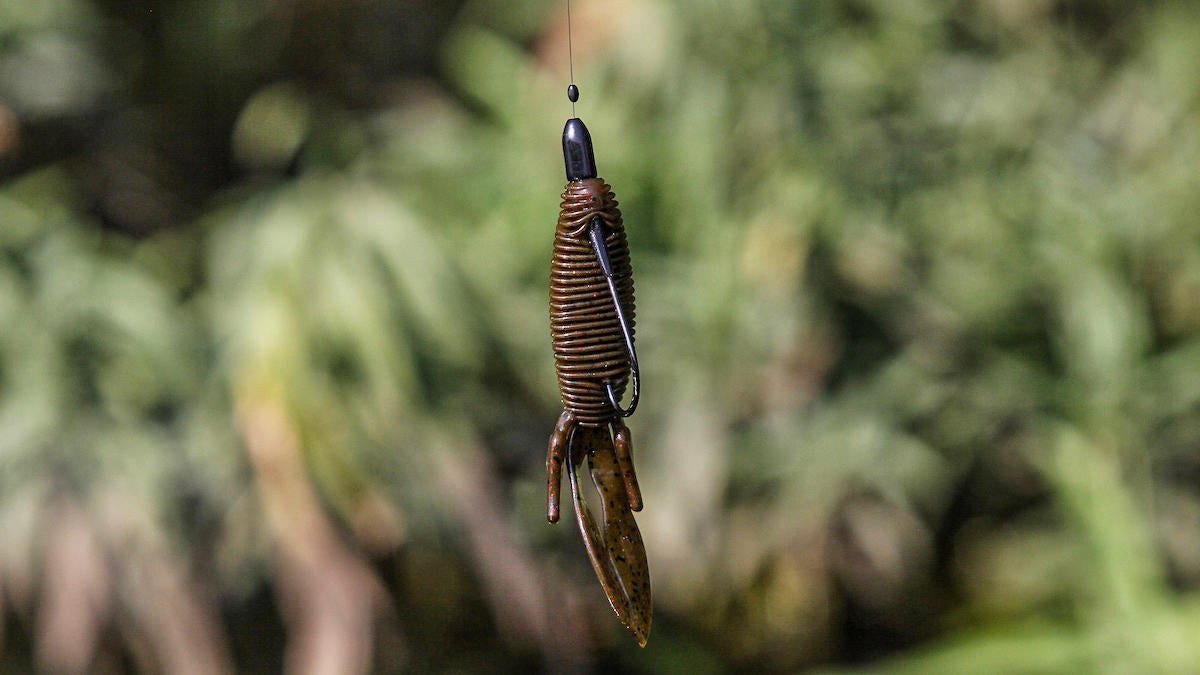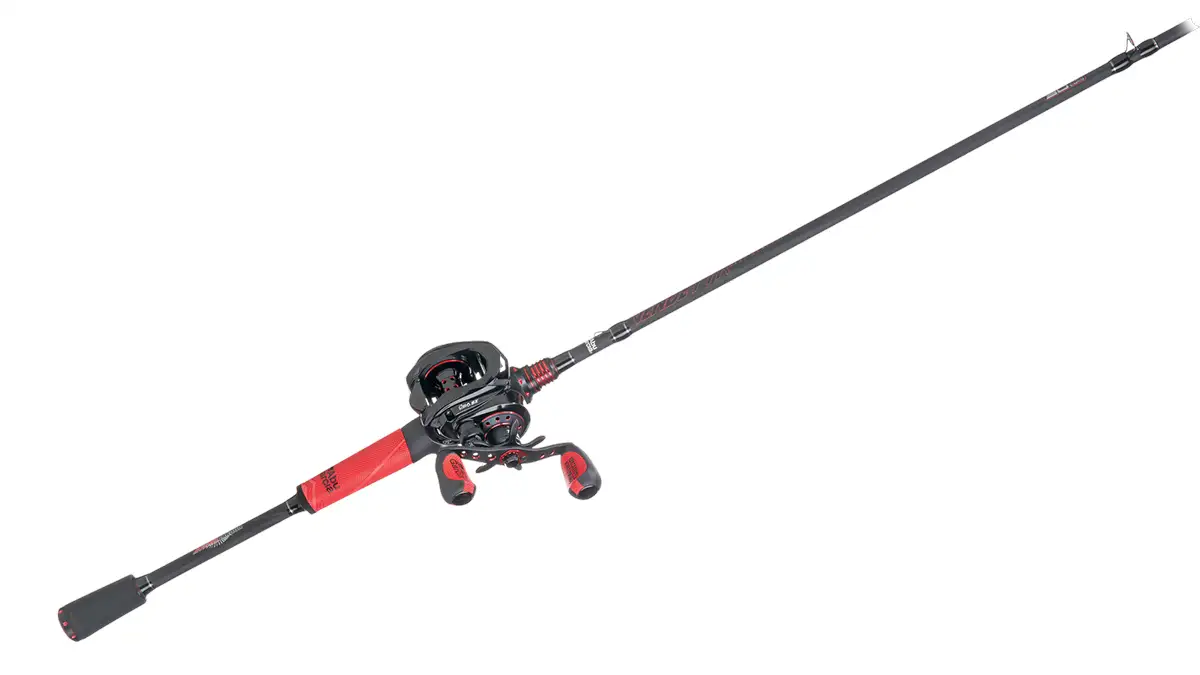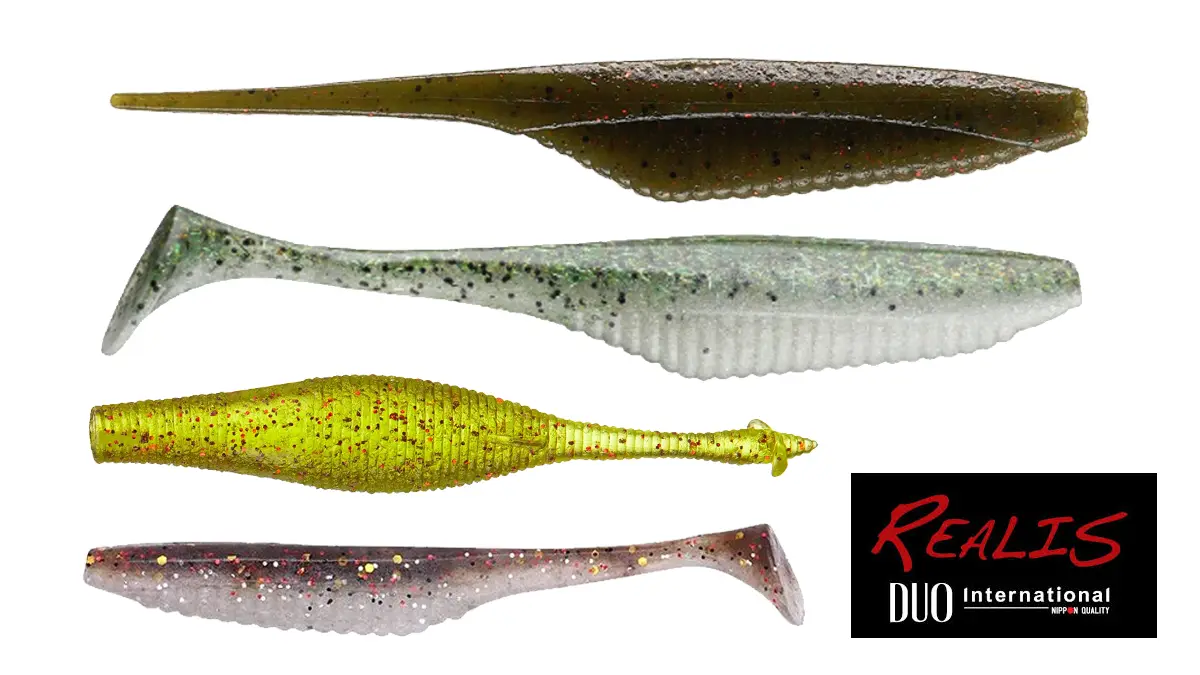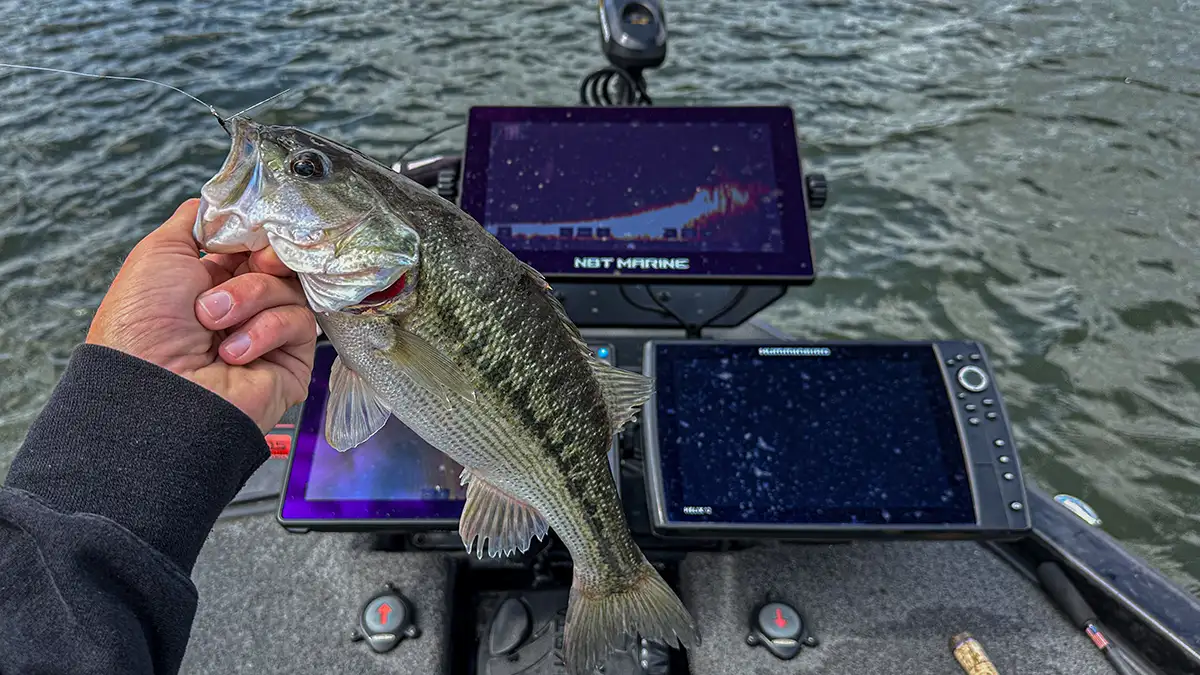Fall is finally here. Football is on TV, pumpkins are on the porch and there’s a slight, crisp chill suddenly replacing the sweltering heat here in my neck of the woods—for about 20 minutes, once a week, right at daylight anyway. But fall is here nonetheless. And though we’ve only had a handful of cooler nights, the bass are certainly abreast of the situation.
The typical fall fare of surfacing bait and busting bass is showing up across the country. But that’s not all the fall has to offer. Shoreline vegetation, such as water willow, can be loaded this time of year. As shad and bass that summered in deeper water make their way to shore, they collide with bluegill and bass that spent their time in the shallows. This sets the table for a gluttonous feast and there are five baits I like to add to the buffet.
Swim jig
No matter the time of year, my favorite bait for water willow is a swimjig and, of course, it still tops my list in the fall. Swimming a jig allows me to adjust the depth of my presentation at any given moment during my retrieve. By varying my retrieve, I can let the bait sink down in the holes or sparse areas of the vegetation and then work the bait high over thicker, matted grass.
Fishing a swim jig in water willow alleviates a lot of the inherent heartbreak associated with this type of cover. It’s a high-percentage bait when it comes to converting a bite to a hookup and once you hookup, you don’t lose many on a swim jig. With a few of the other baits we’ll discuss shortly, you’ll have a lot of near misses and blowups that buckle your knees.
Having a swim jig in your hand will prevent a lot of that and having one on deck as a follow-up bait will often rectify a missed opportunity. Furthermore, when I do miss one on a swim jig, I can usually make another cast or two back to the fish and draw a second strike.
Though shad are the predominant focus in the fall, I still like to use a darker swim jig to mimic bluegill, especially in the early fall. As the water cools further and the shad become even more predominant in the shallows, I’ll transition to a shad pattern with my swim jig from time to time. But by and large, I’m throwing a black and blue swimjig with a green pumpkin trailer.
Spinnerbait
A spinnerbait is a close second when it comes to water willow and the main reason I stick with bluegill patterns in my swim jig selection. If I want to mimic shad, I’ll just pick up a spinnerbait. Like a swim jig, a spinnerbait comes through the vegetation very efficiently and usually converts a strike into a catch. However, the are times when fish will not commit to the spinnerbait and you’ll experience a lot of short strikes. If this is the case, your best bet is to fall back to the swim jig.
I’ll always throw some combination of willow leaf blades in the fall and they’re almost always silver. The reasoning here is obvious when it comes to mimicking shad. My typical fall spinnerbait will have two willow leaf blades and a blue glimmer skirt with a touch of green or chartreuse. But I have had a lot of success in the fall with quad-blade spinnerbaits comprised of four willow leaf blades that gradually grow in size as you move away from the line tie.
Buzzbait
A buzzbait is perhaps my favorite bait to fish in the fall from an excitement standpoint, but lands at third on the overall list due to efficiency. Water willow often creates vast strike zones. If you visualize the area from the bank to the edge of the vegetation and from the surface to the bottom of the water column, you’re asking any lure to do quite a bit.
The loud and continuous noise that a buzzbait generates offers a very effective homing beacon for bass sprinkled about in water willow. However, though great at drawing fish out, a buzzbait isn’t always capable of sealing the deal. Fish will often boil on the bait, turning off at the last second. Some strikes are ferocious as if the bass is trying to kill the bait, but still come up empty-handed.
This tendency for near misses can be minimized by using a trailer hook, which is something I always do with both a buzzbait and a spinnerbait. Both baits track in an upright position, so a trailer hook may slightly increase your chances of getting snagged, but the difference in your hookup ratio is drastic.
Frog
Anytime I can get bit on it, I’ll have a frog tied on. Like the swim jig, I primarily use a frog to mimic bluegill. But like the buzzbait, it can lead to lots of frustration. At times, it can be difficult to get a bass to commit to a frog and you have to fall back to a swim jig, but a frog can go places where a buzzbait, spinnerbait and even swim jig cannot. That’s really the added value of having a frog on deck.
I like to use a frog to target areas in water willow that are thick with matted vegetation but also sparse areas as well. The reasoning, a frog’s capacity to float and extend the presentation. There are often areas in water willow where you can’t effectively fish a bait that requires a continuous retrieve. Though you can get bit on a frog anywhere in water willow, those concentrated strike zones are where it shines.
Flipping and pitching
Flipping a Texas-rigged soft plastic is likely the most effective way to pick apart water willow. You’ll catch more fish per blade of grass covered than any other technique, but in order to fish this technique throughly, you’ll be limited to covering far less water than all the other techniques we’ve discussed.
Again, for flipping I’m rarely imitating shad with my bait and color selection but bluegill instead. Darker colors in the green pumpkin to black and blue range seem to work best.
I like to keep something like a Strike King Rage Craw or Missile Baits D Bomb rigged up on a 3/8-ounce weight whenever I’m fishing water willow. Though I rarely slow down to fish this style bait exclusively, it offers a very effective followup presentation for short strikes. If I catch or miss a few fish on a particular stretch of water willow, I will typically flip back through an area like that and try to pick it apart.
Breaking down water willow
When deciding which of these five presentations to go with, it’s important to look at the cover in front of you. If the water willow is thick with a hard edge, a spinnerbait and buzzbait are both effective tools for covering water quickly and locating fish. If the vegetation is vast and sparse, these two search baits along with the swim jig are ideal, with the swim jig leading in the hookup ratio and the spinnerbait and buzzbait offering ways to cover ground quicker in search of productive water. Lastly, when targeting isolated cover or specific variations in the density of the water willow, flipping and frogging are your best bets.
The majority of the water willow I fish is in fairly clear water, especially in the fall when we don’t receive a lot of rainfall here in the south. But keep water color in mind when selecting colors and presentations for fishing water willow in your area. If the water is stained or even muddy, fish will still inhabit water willow. However, brighter colors such as white and chartreuse will probably work better for your given conditions and, while a swim jig is extremely effective in clear water, giving the fish something easier to find like a spinnerbait or buzzbait may yield better results in lower visibility.


